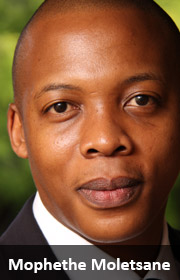 First there was one, then two, then just one again. Maybe, we thought, there can only be one South African pay-television operator.
First there was one, then two, then just one again. Maybe, we thought, there can only be one South African pay-television operator.
High-profile over-the-top services like Netflix are hitting the market, additional pay-TV licences have been awarded to Kagiso Media, Siyaya TV, Mindset Media and Close T Broadcasting Network, and we can possibly expect more telecommunications operators to enter the video-on-demand (VOD) game soon.
Judging from the sudden interest from pay-TV operators, you would think there was a sizeable community that channel surfs on the weekends while waiting for the main sporting events. Then again, the wave of “anywhere, anytime” media content offerings suggests otherwise.
All of this should lead us to question the type of video content South Africans are consuming daily, and on what.
About 9m of South Africa’s 12m households have a TV — a 75% penetration rate that is in line with the global average of 80%. Slightly more than half have a DStv subscription, dominated by the basic Compact package. MultiChoice reports a PVR (personal video recorder) distribution of approximately 960 000, with BoxOffice VOD averaging 529 000 movie rentals per month.
But video content has broadened and its consumption has strayed outside traditional TV categories. The typical South African consumes just over seven hours of screen media daily, and increasingly meshes TV and digital screens to consume related content with the more popular programmes.
Any perceptions of South African viewers being hungry for more premium TV further dissipate when analysing TV ratings. According to South African Audience Research Foundation’s Cume Channel Reach, the 10 most watched channels on Pay-TV are, in order: SABC1, e.tv, SABC2, SABC3, Mzansi Magic, M-Net Movies Action, Channel O, Studio Universal, M-Net Movies Stars and Mzansi Wethu.
The list is dominated by local content channels, and free-to-air channels make up the top four, with programmes such as Generations, Muvhango, News & Lotto Draw Live proving most popular. A number of factors might be contributing to this, including the lack of affordability of premium content packages, resulting in the mass appeal of the more affordable packages offering limited TV content.
MultiChoice seems to be on the mark with its strategy to invest in local content, as channels like Mzansi Bioskop, Africa Magic Movies and SuperSport 4 feature in the top 20 most watched channels. However, the wave of new pay-TV operators does have the potential to create excitement about additional content. Reports about Chinese billionaire Wang Jianlin building the world’s largest studio complex are adding to the excitement. Netflix is also said to be courting some of the best screenwriters in the world. Anime, travel and pornography are some of the types of content the new entrants may introduce. It will be interesting to see how the possibility of new content versus the increasing popularity of local content, demonstrated by shows such as Our Perfect Wedding, Isibaya and Ayeye, will play out.
The industry can only expect a Mayweather vs Pacquiao showpiece when sport rights (PSL, EPL, La Liga, etc) are up for renewal.
Could broadcasting, like telecoms, be set to skip some evolutionary phases completely with the introduction of the new players?
Most global consumers are empowered by versatile new devices and want their content to be immediate, flexible and accessible on the screen of their choice. Many businesses are offering that with content that follows the consumer from screen to screen.

But smart device penetration is still relatively low in South Africa, and it would be interesting to track uptake of Multichoice’s DStv Now service. Connectivity, speed and data costs also continue to present a significant challenge locally and globally. This will be resolved with innovative partnerships such as Netflix’s recent deal with a cable company and Internet service provider to offer faster and more reliable access to its subscribers. This may encourage manufacturers and mobile operators to follow suit with clever new ways of offering a multi-device viewing experience to subscribers.
Another trend is that of many operators offering ultra-high-definition or 4K viewing experiences and focusing on improving the quality of service. Many movies and TV programmes are already being shot in 4K, and major hardware manufacturers are offering 4K TV sets to consumers at prices comparable to the prices of HD sets when mass adoption occurred.
The relevance for the local market is a bit trickier in this case. In South Africa, an enhanced viewing experience will be a key differentiator for operators that pursue innovative partnerships with content providers and Internet service providers. The required infrastructure will, however, come at a significant cost, and with today’s 19% PVR penetration (960 000 out of 5m DStv subscriptions), it will require a creative business case.
Lastly, global changes in content consumption have resulted in a range of new dynamics, including ever-changing operating models, alternative measurements for advertising, a continuing breakdown of content distribution windows and the growing mainstream use of crowdfunding for media projects.
In South Africa, the chaos could be the best opportunity for operators to experiment with “build your own bouquet” services, hybrid payment models (combining a dedicated percentage of advertising with a fixed fee) or even purely advertising-based subscription options.
It promises to be an interesting time for subscribers, and one we hope will live up to the hype.
- Mophethe Moletsane is senior manager: communications, media and technology at Accenture




